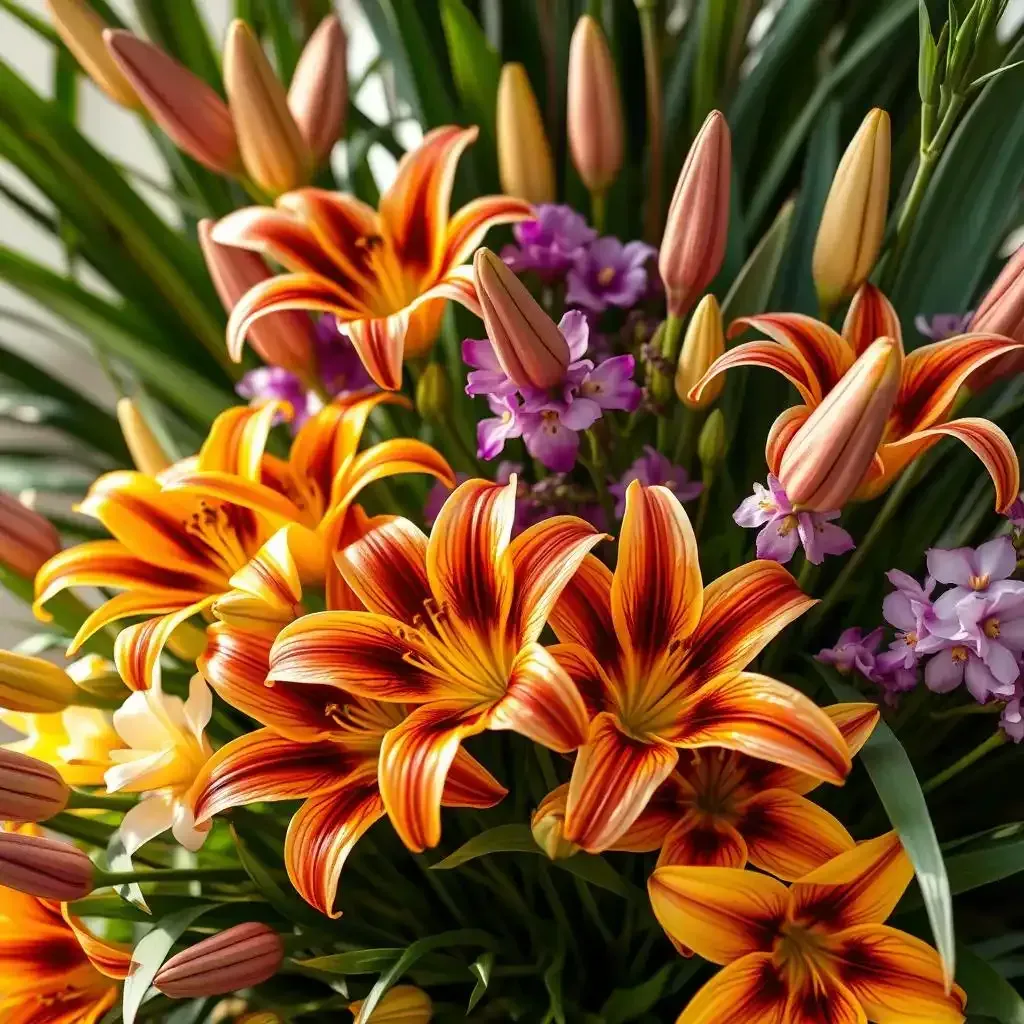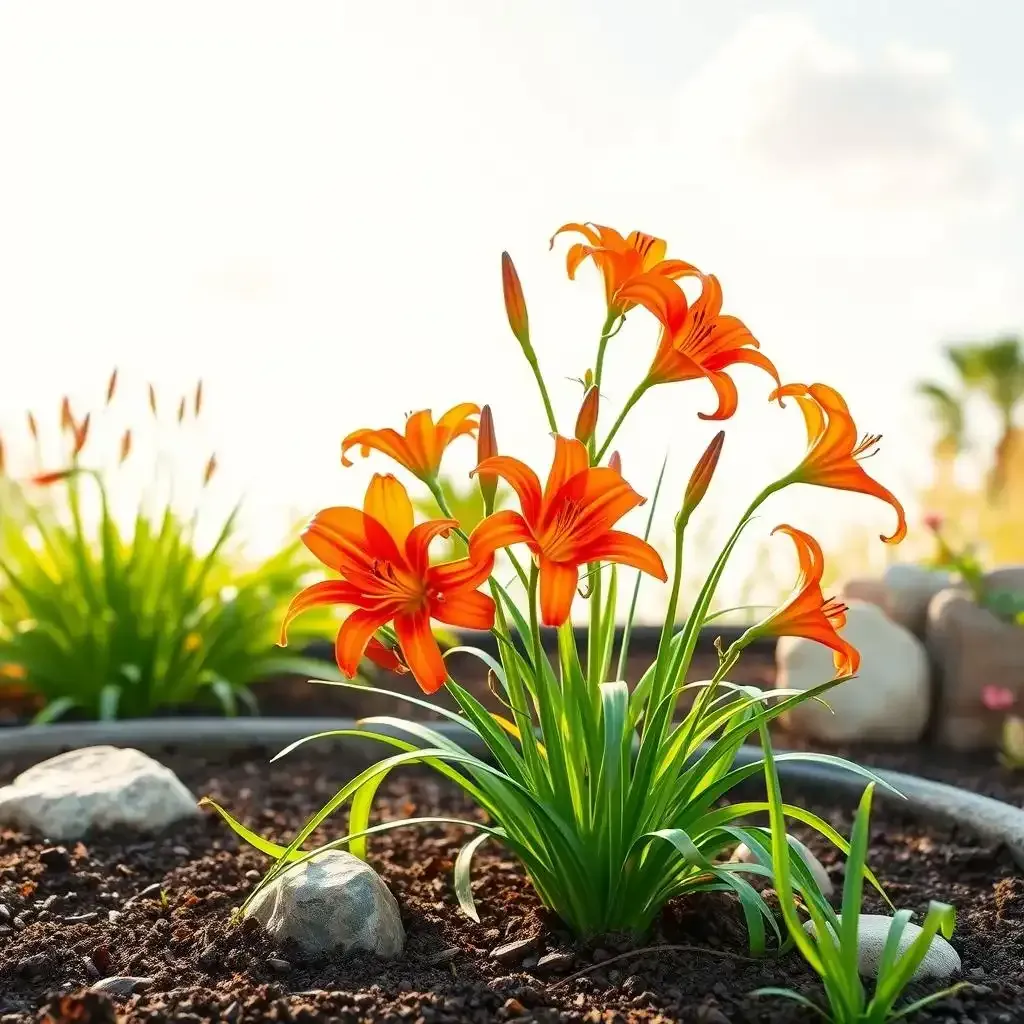Table of Contents
Ready to add a burst of vibrant color to your garden? tiger lily flower bulbs are a fantastic choice, offering striking orange and black blooms that are sure to turn heads. But before you can enjoy these stunning flowers, you need to know how to plant and care for them properly. This comprehensive guide from lilyflower.homes will walk you through every step, from selecting the perfect tiger lily flower bulbs to troubleshooting common problems. We'll cover everything you need to know to cultivate these magnificent plants, ensuring a successful and beautiful display in your garden. Get ready to transform your outdoor space with the fiery elegance of tiger lilies!

Amazing Tiger Lily Flower Bulbs: Grow Stunning Blooms!
Planting Tiger Lily Flower Bulbs: A Step-by-Step Guide

Planting Tiger Lily Flower Bulbs A Step By Step Guide
Planting tiger lily flower bulbs is like giving a tiny sleeping dragon a comfy bed to wake up in! First, you gotta pick the right spot – somewhere sunny, with well-drained soil. Think of it as finding the perfect sunbathing spot for your little dragon. Poor drainage is a big no-no; it's like giving your dragon a soggy bed – not fun! I always check my soil's drainage; if it's too heavy, I amend it with compost to make it lighter and fluffier. You can learn more about getting your soil just right in our soil guide.
Next, dig your holes! Make 'em about twice as deep as the bulb is tall. Imagine it like this: the bulb is the dragon, and the hole is its cozy cave. You want the cave to be roomy enough so it can spread its roots comfortably. Space your holes about a foot apart, giving each dragon its own space to grow and thrive. Don't overcrowd them – it's like forcing too many dragons into one small cave; they won't be happy!
Step | Action | Tip |
|---|---|---|
1 | Choose a sunny spot with well-drained soil. | Amend heavy clay soil with compost. |
2 | Dig holes twice as deep as the bulb. | Space bulbs about a foot apart. |
3 | Place bulbs pointy end up. | Gently cover with soil. |
4 | Water gently after planting. | Avoid overwatering. |
Now, carefully place your bulbs in the holes, pointy end up. This is crucial – it's like making sure your dragon is sleeping head-up, not upside down! Gently cover them with soil, and give them a gentle watering. Don't drown them, though – that's not good for any dragon, no matter how small. Too much water can rot the bulbs, which is a real bummer. For more tips on keeping your lilies hydrated, check out our watering guide.
That's it! You've successfully planted your tiger lily flower bulbs. Now, just sit back, relax, and wait for your little dragons to wake up and let loose their fiery beauty. Remember, patience is key. It takes time for bulbs to grow, just like it takes time for a dragon to hatch from its egg. If you want to give your lilies a little extra help, we have a guide on fertilizers that can help.
- Choose a sunny location.
- Use well-drained soil.
- Plant bulbs pointy end up.
- Water gently after planting.
One last thing: Keep an eye out for pests and diseases. Think of it as dragon-guarding duty! A healthy garden is a happy garden, and a happy garden is a garden full of beautiful tiger lilies. For more information on keeping your lilies safe from pests and diseases, check out our pest control and disease prevention guides.
"The best things in life are worth waiting for." - Unknown
Tiger Lily Flower Bulbs: Choosing the Right Variety for Your Garden

Tiger Lily Flower Bulbs Choosing The Right Variety For Your Garden
Picking the perfect tiger lily flower bulbs is like choosing the best flavor of ice cream – it's all about personal preference! But there are a few things to keep in mind. First, think about the size. Some tiger lilies are tiny, like little firecrackers, while others grow tall and majestic, like fiery towers. Check out our guide on bulb sizes to learn more. Do you want a compact plant for a border, or a showstopper for the back of your garden?
Then there's color. While the classic tiger lily is a vibrant orange with dark spots, you can find varieties in shades of yellow, pink, and even red! Our color varieties guide has some stunning pictures to inspire you. For example, the ‘African Queen’ boasts deep orange petals with striking black spots, while ‘Pink Tiger’ offers a softer, more delicate look. Imagine the possibilities! Each one is unique, just like a fingerprint.
Variety | Color | Height |
|---|---|---|
African Queen | Deep Orange with Black Spots | Tall |
Pink Tiger | Pink with Dark Spots | Medium |
Yellow Tiger | Yellow with Dark Spots | Medium |
Next, consider the bloom time. Some tiger lilies burst into bloom early in the summer, while others wait until later. Our bloom times guide will help you coordinate your planting for a continuous display of color. If you want a long season of tiger lily beauty, you might choose a mix of early, mid, and late bloomers. That way, you'll always have something spectacular to admire.
Finally, think about your climate. Some tiger lilies are hardier than others and can withstand colder winters. Our guide on hardy lilies can help you choose bulbs that will thrive in your area. You wouldn't want to plant a tropical lily in Alaska, would you? That's just asking for trouble! You want your tiger lilies to be happy and healthy, and the right variety is a big part of that.
- Consider the size of the plant.
- Choose your favorite color.
- Select a variety with the right bloom time.
- Pick a variety suited to your climate.
“The glory of gardening: hands in the dirt, head in the sun, heart with nature. To nurture a garden is to feed not just the body, but the soul.” ― Alfred Austin
Caring for Your Tiger Lily Flower Bulbs: Tips for Success

Caring For Your Tiger Lily Flower Bulbs Tips For Success
Watering Your Tiger Lilies: The Goldilocks Approach
Watering your tiger lilies is like trying to make the perfect cup of tea—you want it just right! Too little water, and your lilies will wilt like sad, droopy clowns. Too much water, and their bulbs could rot, which is a real party killer. Aim for consistently moist soil, not soggy or bone-dry. I usually water deeply but infrequently, letting the top inch of soil dry out between waterings. This encourages deeper root growth, making your lilies more resilient. Think of it like giving your plants a good, long drink instead of lots of little sips. Remember, the best way to figure out your watering schedule is to check your soil regularly. For more info, check out our for a more detailed explanation.
- Water deeply but less often.
- Let the top inch of soil dry out between waterings.
- Adjust watering based on weather conditions.
Feeding Your Tiger Lilies: A Balanced Diet
Just like you need a balanced diet to stay healthy, so do your tiger lilies! Fertilizing them is key to getting those vibrant blooms. I use a balanced, slow-release fertilizer in spring, before the lilies start growing. You can also use a liquid fertilizer every few weeks during the growing season. But don't overdo it; too much fertilizer is like giving your plants a sugar rush—it'll make them grow too fast and become weak. A little goes a long way! For a more personalized approach to fertilizing your lilies, take a peek at our detailed guide on .
Fertilizer Type | Application | Timing |
|---|---|---|
Slow-release granules | Scatter around plants | Early spring |
Liquid fertilizer | Dilute and water | Every few weeks during growing season |
"A garden is a lovesong written in flowers." ― Anonymous
Tiger Lily Flower Bulbs: Troubleshooting Common Problems and Solutions

Tiger Lily Flower Bulbs Troubleshooting Common Problems And Solutions
So, you've planted your tiger lily flower bulbs, and now you're waiting for those gorgeous blooms, right? But what if things don't go exactly as planned? Don't panic! Even experienced gardeners run into problems sometimes. Think of it as a fun challenge, like a garden puzzle you get to solve. One of the most common issues is pests. Slugs and snails are notorious for munching on lily leaves, leaving behind slimy trails and unhappy plants. If you see signs of this, you can try using slug traps or a natural repellent, like beer traps – they're surprisingly effective! You can check out our guide on for more ideas.
Another problem you might encounter is disease. Fungal diseases, like botrytis blight, can cause brown spots on leaves and stems. Good air circulation and avoiding overhead watering can help prevent this. If you do see signs of disease, you might need to remove affected leaves and use a fungicide. Our guide has more details on identifying and treating common lily diseases. Remember, prevention is always better than cure! Think of it as being like a detective, finding the problem and solving it before it gets too big.
- Pests: Slugs, snails
- Diseases: Botrytis blight, etc.
- Other issues: Poor drainage, wrong soil pH.
Sometimes, your tiger lilies might not bloom as expected. This could be due to several factors, including poor drainage, incorrect planting depth, or insufficient sunlight. Make sure your soil drains well, and that your bulbs are planted pointy-end up at the correct depth. Also, ensure your lilies get enough sunlight. Our sunlight needs guide can help you determine the ideal amount of sun for your lilies.
And finally, don't forget about soil pH! Lilies prefer slightly acidic soil, so if your soil is too alkaline, your lilies might not thrive. You can test your soil pH using a kit from your local garden center. If the pH is off, you can amend your soil with things like peat moss or sulfur to bring it down. Our guide on covers soil pH in more detail.
Problem | Cause | Solution |
|---|---|---|
Pests (slugs, snails) | Hungry critters | Use slug traps or repellent |
Disease (botrytis blight) | Fungal infection | Improve air circulation, avoid overhead watering |
No blooms | Poor drainage, wrong depth, insufficient sun | Amend soil, check planting depth, ensure adequate sunlight |
Poor growth | Incorrect soil pH | Amend soil to correct pH |
Remember, gardening is a learning process. Don't be discouraged if you encounter a few setbacks. Just learn from your mistakes, and keep experimenting. You'll be growing magnificent tiger lilies in no time!
"The gardener's heart is always hopeful." - Unknown
Final Thought
With a little care and attention, your tiger lily flower bulbs can reward you with years of vibrant blooms. Remember to choose the right variety for your climate, provide adequate sunlight and water, and address any problems promptly. Happy gardening!